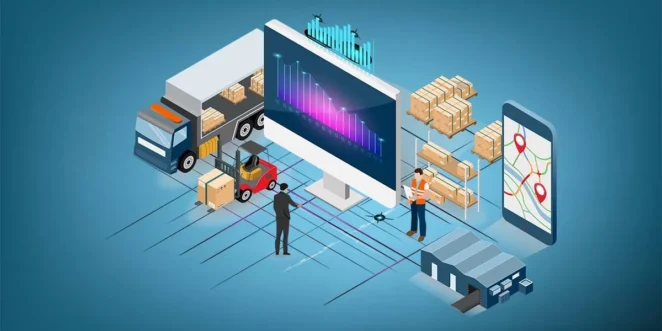Route optimization is the process of finding the most efficient and cost-effective route for a set of destinations or stops. It involves the consideration of various factors such as distance, travel time, traffic conditions, and other constraints to determine the best sequence of stops and the optimal path to follow. The goal of route optimization is to minimize the overall travel time, distance, and cost, while maximizing the productivity and efficiency of the vehicles and drivers involved.
The concept of route optimization has been around for decades and has been applied in various industries and applications, such as logistics, transportation, field service management, and even personal trip planning.

With the advancements in technology and the availability of sophisticated algorithms, route optimization has become an essential component of modern transportation and logistics systems, enabling businesses and individuals to save time, money, and resources, while improving their overall performance and customer satisfaction.
Route optimization can be approached in different ways, depending on the specific requirements and constraints of each application. Some methods involve the use of mathematical models and algorithms, such as the well-known traveling salesman problem (TSP) and vehicle routing problem (VRP), which aim to find the shortest possible route that visits all the stops and returns to the starting point.
Other methods rely on heuristic techniques or artificial intelligence methods, such as genetic algorithms, simulated annealing, and ant colony optimization, which try to find a near-optimal solution by exploring the search space and learning from previous iterations.
The Importance of Efficient Route Planning

Efficient route planning is a critical aspect of any transportation or logistics operation, as it directly affects the performance, cost, and sustainability of the entire system. By optimizing the routes and schedules, businesses can achieve significant improvements in their operational efficiency and customer service, leading to increased profitability and competitiveness.
There are several key benefits of efficient route planning that make it an essential element of modern transportation and logistics management:
• Reduced fuel consumption and emissions: By minimizing the travel distance and time, route optimization helps to lower the fuel consumption and greenhouse gas emissions of the vehicles, contributing to a more sustainable and environmentally friendly transportation system.
• Improved asset utilization: Optimized routes and schedules enable businesses to make better use of their vehicles and drivers, reducing the need for additional resources and investments. This leads to higher asset utilization, lower capital and operating costs, and increased return on investment.
• Enhanced customer satisfaction: Efficient route planning ensures that deliveries, pickups, and service appointments are made on time and within the specified time windows, leading to greater customer satisfaction and loyalty. Moreover, it enables businesses to provide more accurate and reliable ETAs, improving the overall communication and relationship with the customers.
• Increased productivity and revenue: By optimizing the routes and schedules, businesses can complete more tasks and serve more customers within the same amount of time, leading to increased productivity, revenue, and market share.
• Better decision-making and strategic planning: Route optimization provides valuable insights and data that can be used for decision-making and strategic planning, such as identifying bottlenecks, inefficiencies, and opportunities for improvement, as well as forecasting the demand and capacity requirements.
How Distance Matrix API Enhances Route Optimization

The Distance Matrix API is a powerful tool that can significantly enhance the route optimization process by providing accurate and real-time information about the distances and travel times between multiple locations.
It works by calculating the distance and duration for a matrix of origin-destination pairs, taking into account various factors such as road network, traffic conditions, and transportation mode. This information can be used as input for the route optimization algorithms and models, enabling them to find the optimal routes and schedules based on the most up-to-date and accurate data.
There are several key features of the Distance Matrix API that make it a valuable addition to any route optimization solution:
• High accuracy and reliability: The Distance Matrix API uses advanced algorithms and a vast amount of data from various sources, such as maps, GPS, and traffic sensors, to provide highly accurate and reliable distance and travel time estimates. This ensures that the route optimization process is based on the most accurate and relevant information, leading to better results and performance.
• Real-time traffic information: The Distance Matrix API integrates real-time traffic information, allowing it to provide dynamic and up-to-date travel time estimates that reflect the current traffic conditions. This enables the route optimization algorithms to consider the impact of traffic congestion, accidents, and other events on the travel time and adjust the routes and schedules accordingly, leading to more efficient and realistic route plans.
• Flexible transportation modes: The Distance Matrix API supports multiple transportation modes, such as driving, walking, cycling, and public transit, allowing it to be used for a wide range of applications and industries, from logistics and delivery to field service and personal trip planning.
• Scalability and performance: The Distance Matrix API is designed to handle large-scale and complex route optimization problems, with the ability to process thousands of origin-destination pairs within a single request. This ensures that the route optimization process can be performed efficiently and quickly, even for large and distributed transportation networks.



